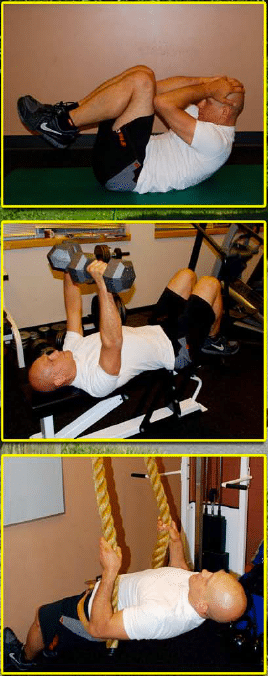I first got serious about physical conditioning when I got involved in Brazilian jiu-jitsu. Sure, I’d lifted weights and done some running before that point, but there was just something about grappling that drove home how very important conditioning was.
To research the topic of conditioning for grappling I mostly read books, scavenged magazine articles and picked the brains of athletes from different sports. This was back in the very early days of the internet, so I couldn’t use that resource nearly as much.
Anyhow, from this research I got lots of tips, ideas and suggestions about how to structure a training program. Of course a lot of it was contradictory, but that was to be expected.
One thing that really bothered and worried me though. It seemed that different exercise modalities could conflict with each other.
For example, when it came to stretching, various studies claimed that it didn’t reduce injuries, and that pre-exercise stretching reduced maximal strength, vertical leap performance and sprinting ability.
Another example was the suggestion that endurance training could reduce the gains of strength training.
All these tradeoffs (and many more) were worrying and frustrating. No matter what area of conditioning I looked at, it seemed that it would have negative effects on some other aspect of my fitness.
But eventually I realized two things
1 – Grapplers are generalists.Compared to grappling, it’s hard to think of another sport that requires more of a blend of strength, endurance, explosiveness, flexibility, aerobic endurance, anaerobic endurance and muscular endurance.
- We need strength like a powerlifter, but we ALSO need aerobic endurance (I firmly believe that running helps my jiu-jitsu).
- We need speed like a sprinter, but we ALSO need flexibility (ditto).
- We need explosiveness like an olympic lifter but we ALSO need to withstand muscular fatigue.
I believe that grapplers need to be generalists in their training. You can’t focus only on one aspect of conditioning to the exclusion of all the others.
2 – Most grapplers will benefit from doing any conditioning, and most of the trade-offs between different aspects of fitness really only apply to elite-level athletes.
Someone competing in a sport that requires raw strength (like powerlifting) needs to do everything he can to increase strength.
Victory at the elite level in sports that rely primarily on one attribute is decided by fractions of a second, an inch or two, or a few pounds. In this context, the danger of inhibiting even a tiny bit of that primary attribute by doing the wrong exercises is a real concern.
The thing is that most grapplers are nowhere near the limits of their physical development!
Most recreational grapplers could easily become more flexible AND stronger AND more explosive AND develop better endurance (all the while also working on their techniques).
Your real concern when it comes to conditioning is overtraining/under-resting, not the danger of reducing your vertical jump by an inch because you were trying to improve your legwork in the guard by doing some Yoga stretches.
There are people out there who enjoy running but then get freaked out when they hear that George St. Pierre’s conditioning coach doesn’t want any of his athletes to do long cardio sessions.
My suggestion is to not worry about it! Doing something is almost always better than doing nothing, and you’re much more likely to continue doing something that you enjoy.
When you get to GSP’s level and the UFC offers you a title shot, then shoot me an email and we’ll talk. Until then don’t throw away your running shoes!
The post Tradeoffs in Conditioning for Grappling appeared first on Grapplearts.

